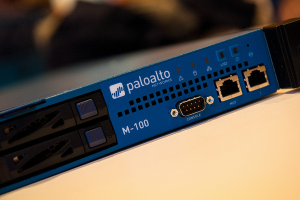SDN, NFV, Network Virtualization All Different
![]() SDN, NFT, and network virtualization are all new terms that are sometimes used interchangeably, but they each have different meanings, writes Wikibon Networking Analyst Stuart Miniman in his latest Wikibon Professional Alert. While VMware’s purchase of Nicira a year ago put a spotlight on Software Defined Networking (SDN) in particular, and by analogy Network Functions Virtualization (NFV) and network virtualization, it also has led to confusing and vendors in particular get very loose with the terminology. The situation is not helped by overlaps among the three.
SDN, NFT, and network virtualization are all new terms that are sometimes used interchangeably, but they each have different meanings, writes Wikibon Networking Analyst Stuart Miniman in his latest Wikibon Professional Alert. While VMware’s purchase of Nicira a year ago put a spotlight on Software Defined Networking (SDN) in particular, and by analogy Network Functions Virtualization (NFV) and network virtualization, it also has led to confusing and vendors in particular get very loose with the terminology. The situation is not helped by overlaps among the three.
In general all three solutions are designed to make networking more automated and scalable to support virtualized and cloud environments. Miniman quotes Ivan Pepelnjak explaining the differences in terms of advances in telephone technology. SDN will take networking from a stage in which human operators have to make connections to route calls to something analogous to today’s telephone networks in which connections are fully automated. Network virtualization wants to move data networking “straight to Skype”.
SDN, Miniman writes, decouples forwarding of the physical switch from the control plane and topology calculations. It allows configuration of up to 50 switches simultaneously, rather than requiring manual configuration of one switch at a time. However, the term SDA is misused by vendors to refer to any software solutions for networking, so buyers must beware of “SDN-washing”.
NFV is designed to run computationally intensive network services such as firewalls, virtual routing, and load balancing in software that can be moved to a VM on commodity software. Brocade’s Vyatta vRouter is a shipping example of NFV.
Network virtualization is a vision originally articulated by Nicira in a recent article by Brad Hedlund that reinforces the relationship between server and network virtualization. He says the primary goal of network virtualization is to decouple physical and virtual resources so that the network can operate “in lock-step with virtualized compute.” Miniman adds that while this has some overlap with SDN and NFV, it is its own use case.
One thing Miniman cautions about — unlike server virtualization, none of these forms of network automation will result in immediate cost savings. The number of network ports does not change. Some very large Web companies have moved to commodity switches, but that is orthogonal to SDN, and hyperscale companies have a very different IT resource management model than enterprises.
Overall, he concludes, “the networking industry needs to move beyond today’s world of manual configuration and embrace automated solutions that are coordinated with the rest of the (virtual) infrastructure.” Network admins need to update their skills both to help drive this transition and to avoid being left behind. SDN, NFV, and network virtualization each has a place in delivering new solutions to the market.
A message from John Furrier, co-founder of SiliconANGLE:
Your vote of support is important to us and it helps us keep the content FREE.
One click below supports our mission to provide free, deep, and relevant content.
Join our community on YouTube
Join the community that includes more than 15,000 #CubeAlumni experts, including Amazon.com CEO Andy Jassy, Dell Technologies founder and CEO Michael Dell, Intel CEO Pat Gelsinger, and many more luminaries and experts.
THANK YOU













